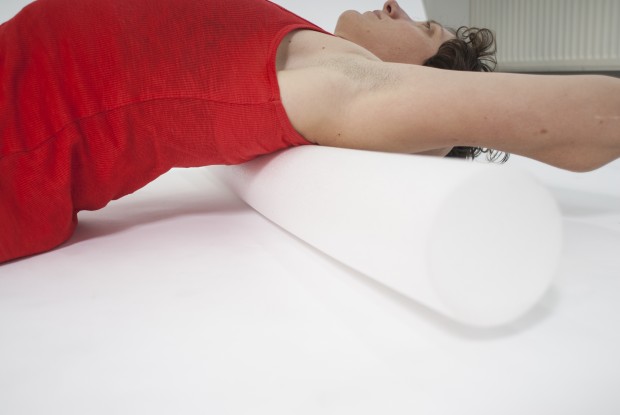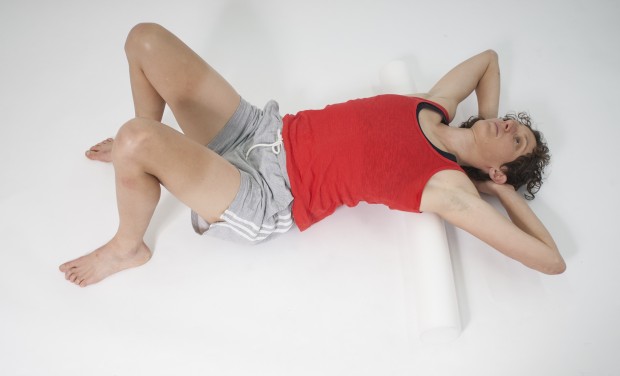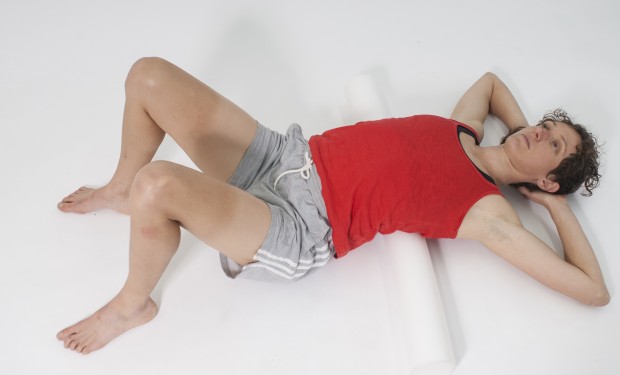The lower back is a known problem area for many cyclists, but the upper back, or ‘thoracic’ spine deserves just as much, if not more attention.
As a cyclist you spend many hours hunched over the handlebars, and if you are a seated worker too, the rest of the time you may be crouched over a desk. Stiffness in the upper back is a less obvious problem as you are more likely to experience symptoms around your neck and shoulders as a result. Where the upper back becomes stiff, pain and problems are usually felt around the shoulders, and in particular a sore neck when riding the bike can often be caused by stiffness further down the spine.

Designed in particular for rotation, the thoracic vertebrae can get ‘stuck’ when you spend a lot of time flexed forward, and this can then restrict twisting and backwards bending. Contrary to what seems logical this can also limits how well you bend forwards thereby having a direct impact on your cycling position and your ability to achieve a ‘flat back’. In actual fact this requires a nice smooth curve (rather than being literally flat) and ensures the stress of the position is shared across the vertebrae rather than shifted towards one specific area (such as the junction with the neck).
Stretches for the back muscles can be helpful, but direct and specific mobilisations for the vertebrae of the spine are really important in order to keep it moving well and avoid the stiffening and rigidity than can result from lack of movement. Where thicker foam rollers are useful for massaging muscle and tissue, a four-inch diameter foam roller is excellent for mobilising the spine because when you lay across it, the apex of the curve is better suited for separating the vertebrae.
CAUTION: You should not attempt this mobilisation if you don’t have reasonable rib mobility. To test this run a tape measure around your chest (as you would a heart rate monitor), and when you take a deep breath in, ensure that you are able to expand your chest by 1 ½ inches (about 6cm) before attempting this exercise.

Preparation
Lay on the roller with it across the top of your upper back, but not on your neck. Support your head with your hands interlocked at your neck or behind your head. Keep your knees bent with your feet flat on the floor to avoid there being too much strain on your lower back. Take 2 or 3 deep breaths in this position, ‘letting go’ onto the foam roller as you breathe out. The more relaxed you can be, the more effective the mobilisation.
Movement
Then, push with your legs (lifting your hips off the ground as you move over the roller) until the roller is positioned slightly lower down your back. Drop your hips, relax as much as you can and take several deep breaths. Repeat this movement all the way down your upper back until the roller is opposite your lowest ribs (but not on your lower back). When you have worked through the spine in this way, roll off sideways (rather than sitting straight up).

If you are stiff in this area, this mobilisation can be quite uncomfortable to start with. Anytime it becomes too uncomfortable roll off sideways, and by doing what you can little and often it will begin to get easier. This mobilisation can be performed anytime but is most useful after a long ride where you have spent many hours bent over the bike.


